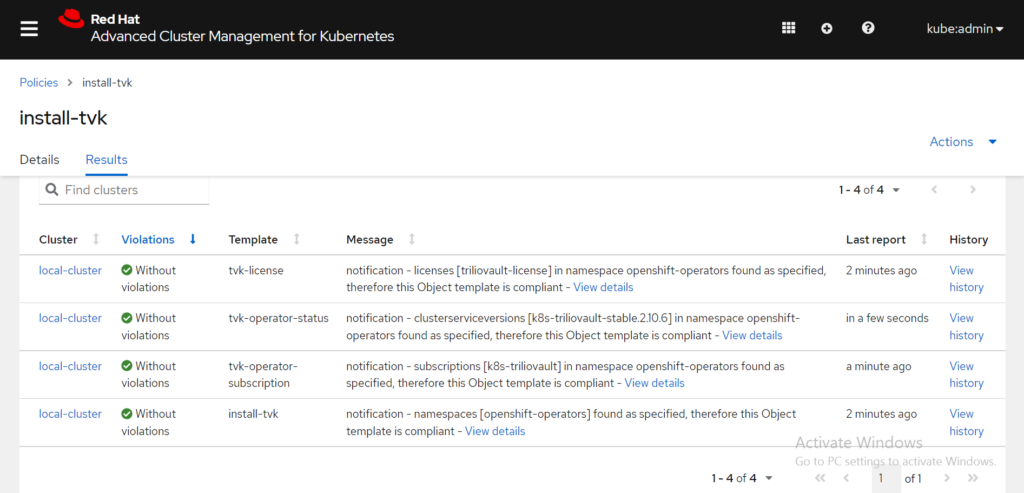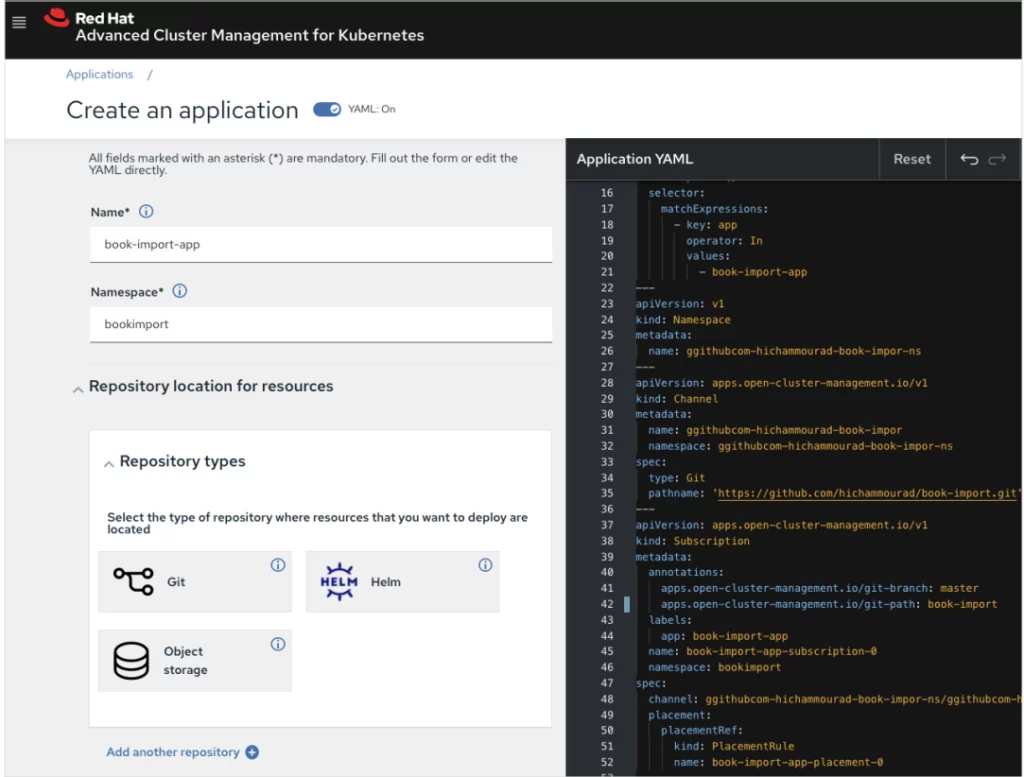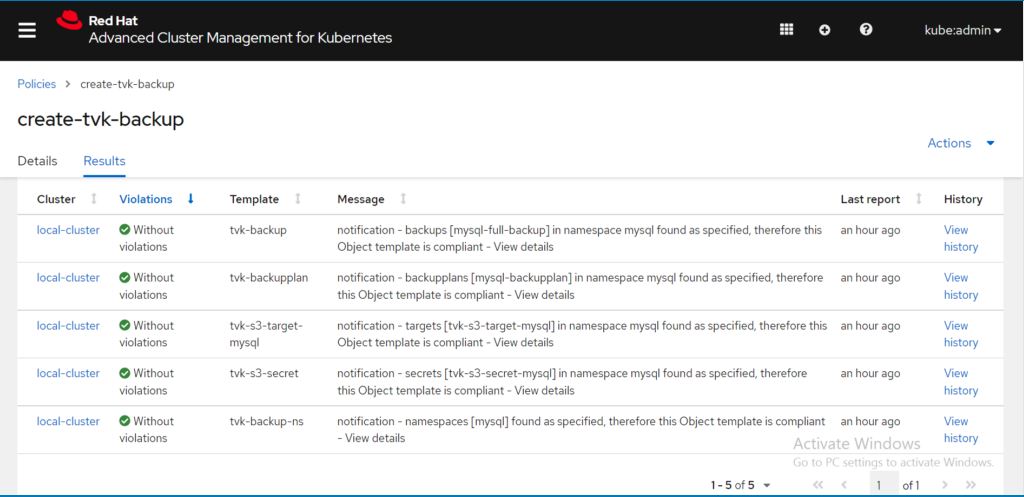Whether you’re new to Kubernetes or it’s a critical part of your infrastructure, eventually, you’ll need to scale. After all, those GitOps scripts can manage your enterprise environment now, but only on a per-workload basis. What happens when you scale to hundreds of clusters—or thousands? How do you manage them? And what about compliance and security?
Thankfully, there are new ways of managing your infrastructure, like Red Hat Advanced Cluster Management (ACM) for Kubernetes. And they make it easier to operate efficiently, boost resiliency, and grow.
Read on to find out the challenges of scaling K8s environments, how solutions like ACM can help, and ways to protect your environment, no matter how complex it becomes?
Key Concepts and Components
A. OpenShift
Delving into the technology supporting a Multi Cluster OpenShift Environment
OpenShift serves as a platform for developing microservices faster, and also plays a vital role in the functioning of a Multi Cluster OpenShift Environment. Indeed, it also offers a scalable infrastructure for deploying, managing and scaling applications effectively.
By utilizing OpenShift developers can conveniently package applications into containers. Deploy them across clusters ensuring consistent performance and reliability.
Key features of OpenShift:
- Automated scaling and load balancing
- Container orchestration and management
- Integration with development tools and frameworks
- Security. Access control
- Monitoring capabilities and logging functionalities
B. Kubernetes
Grasping the connection between OpenShift and Kubernetes alongside Trilio for Kubernetes.
Kubernetes acts as the core orchestration framework within OpenShift, while working in tandem with Trilio, specifically built for Kubernetes environments. It efficiently manages applications by automating processes, optimizing resource utilization and enabling scalability and resiliency.
OpenShift, combined with Trilio for Kubernetes, expands upon Kubernetes capabilities by integrating features tailored to enterprise level deployments. This integrated approach does not only enhance application management, but also incorporates data protection measures along with backup functionalities.
C. Clusters
In an OpenShift Environment, where several clusters are managed centrally with Advanced Cluster Manager (ACM), the term cluster refers to groups of nodes, collaborating to create a distributed infrastructure. Each cluster comprises nodes for executing application workloads and running containers. These independent OpenShift clusters can exist on-prem, or in any public cloud provider.
The purpose of clusters is to facilitate scalability and workload distribution empowering applications to handle traffic and demand. Additionally clusters offer fault tolerance and ensure availability guaranteeing that applications remain accessible even if there are node failures.
Benefits and Use Cases
A. Hybrid Cloud
Lets discuss the usage of Multi Cluster OpenShift Environments, in hybrid cloud infrastructures.
- It allows you to deploy applications across both on premises and public cloud environments giving you the flexibility to take advantage of cloud platforms.
- By migrating and scaling workloads between these different environments it provides and enhances reliability and redundancy by distributing applications across multiple clusters.
- Another benefit is cost optimization as resources can be dynamically allocated based on demand helping you make the use of your resources.
- Centrally create, update, and delete Kubernetes clusters across multiple private and public clouds
- Search, find, and modify any Kubernetes resource across the entire domain
- Quickly troubleshoot and resolve issues across your federated domain
- When creating or updating clusters, automate tasks such as configuring cloud-defined storage, static IP addresses, updating network components (like firewalls or load balancers), and more with the integration of Red Hat Ansible® Automation Platform
B. Microservices
Now let’s talk about implementing microservices architectures in Multi Cluster OpenShift Environments with ACM:
- Define and deploy applications across clusters based on policy
- Quickly view service endpoints and pods associated with your application topology—with all the dependencies
- Automatically deploy applications to specific clusters based on channel and subscription definitions
- When deploying or updating applications, automate configurations like networking, databases, and more with the integration of Red Hat Ansible Automation Platform
C. DevOps
Lastly let’s explore how DevOps practices can be integrated within a Multi Cluster OpenShift Environment.
- With automation capabilities for application deployment scaling and monitoring in place DevOps enables processes for delivery cycles while maintaining high quality standards.
- Adopting integration and delivery (CI/CD) pipelines further facilitates collaboration between development and operations teams by automating workflows in software development lifecycle management.
- By providing an environment across development, testing and production stages with practices in place helps promote efficiency throughout the entire process while reducing manual efforts significantly.
- Finally The ability to reduce manual processes results in time to market for applications allowing organizations to deliver value to their customers quickly.
Key Factors to Consider
A. Scalability
Managing scalability, in a Multi Cluster OpenShift Environment is crucial for handling dynamic workload demands. This involves implementing strategies and best practices to scale applications across clusters.
B. Security
Ensuring the security of applications and data is of importance in a Multi Cluster OpenShift Environment. Robust measures for authentication, authorization and encryption must be implemented to safeguard information from access or breaches.
C. Load Balancing
Efficiently routing traffic across clusters is greatly enhanced by employing load balancing strategies. By distributing the workload load balancing improves application performance and availability resulting in an user experience.
D. Monitoring and Logging
Having monitoring and logging tools is essential for applications within a Multi Cluster OpenShift Environment. These tools provide insights that facilitate management and troubleshooting ensuring timely identification and resolution of any issues that may arise.
E. Infrastructure Management
Efficiently managing networking, storage and compute resources is critical for the deployment of applications, in a Multi Cluster OpenShift Environment. This involves overseeing and optimizing these resources to support the cluster’s demands, enabling operation.
Industry Insight: Red Hat and the Multi Cluster OpenShift Solution
Red Hat, a known provider of Multi Cluster OpenShift solutions and services has developed a platform that allows organizations to efficiently manage and deploy multi cluster environments called ACM. Their expertise in the industry is evident in the advantages offered by their solution.
One noteworthy benefit of utilizing Red Hats Multi Cluster OpenShift solution is its management and scalability of applications across clusters. This empowers organizations to harness the power of clusters resulting in enhanced performance, scalability and availability.
Flexibility and agility are also features of Red Hat’s Multi Cluster OpenShift ACM. The ability to effortlessly move workloads and applications between clusters enables organizations to easily adapt to evolving business requirements while optimizing resource allocation.
Real world examples demonstrate the value that Red Hat’s Multi Cluster OpenShift brings to organizations. For instance a large financial institution achieved improved application performance. Minimized downtime by implementing a cluster environment using Red Hat’s solution. Similarly a global e-commerce company effectively handled their expanding workload by leveraging the capabilities of Red Hat’s Multi Cluster OpenShift ACM ensuring availability and reliability, for their customers.
In general Red Hat’s Multi Cluster OpenShift solution has an impact on organizations aiming to enhance their infrastructure and facilitate transformation. With their dedication to innovation and extensive expertise, in the industry Red Hat is constantly transforming the approach organizations take when designing and overseeing multi-cluster hybrid environments.Trilio, as a data protection and backup solution, can complement the robustness of such cluster environments, providing data backup and recovery options as needed, using policies and automation.
Top Challenges of Multi-Cluster Environments
Before we further explore solutions like Red Hat ACM, let’s dive deeper into multi-cluster Kubernetes environments. Why do enterprises need them? What issues do they solve—and create?
Firstly, no matter where you are on your Kubernetes journey, you’re likely to grow. Your Kubernetes applications will become an increasingly critical part of your production environment. In fact, analysts predict that 70% of organizations will run cloud-native apps in production by 2024.
As this occurs, your Kubernetes environment will scale in both size and complexity. Suddenly, a single cluster or even a few clusters won’t be able to meet your needs.
This is the stage where many enterprises begin using multiple Kubernetes clusters, which offer you the flexibility to scale. You might use a multi-cluster environment to:
-
- Separate your clusters by criticality, for example, by development and production.
-
- Provide highly available services across multiple clouds and regions.
-
- Comply with local regulations on data governance, like the EU’s General Data Protection Regulation (GDPR).
-
- Be more DevOps friendly, due to the use of smaller clusters with a more defined application stack.
But despite the benefits, there are some big challenges. One of those is management.
Now that you have hundreds or thousands of clusters and workloads, traditional management methods, such as administering a cluster or applications through UI or Kubectl, don’t work anymore. And GitOps can help, but it’s not ideal.
Another challenge is security. Each cluster comes with its own security requirements and certificates, as well as access points. Without a way to manage all of your Kubernetes clusters at once, you’re at risk of serious security breaches.
Instead, you need a way to codify and manage each cluster and application lifecycle, no matter how many instances you create. In other words, policy-based application lifecycle management is a must.
Tools to Help You Easily Manage Multi-Cluster Environments
To solve these challenges, the Kubernetes community started a collection of projects, including cluster API, Kyverno, and OpenTelemetry. These projects allowed vendors like Red Hat to create new management platforms that help you easily manage hundreds of clusters and applications.
The vendors focus on:
-
- Access control for multi-tenancy
-
- Cluster lifecycle management
-
- Application lifecycle management
-
- Observability
-
- Governance, Risk, and Compliance (GRC)
Red Hat Advanced Cluster Management for Kubernetes
One of these management platforms is Red Hat Advanced Cluster Management for Kubernetes.
Based on industry-standard toolings, such as Prometheus, Argo CD, and GitOps, Red Hat ACM provides fleet management of Kubernetes clusters and their applications running on OpenShift. Through the use of defined policies and processes, ACM’s governance lifecycle lets you manage security and compliance through a single pane of glass.
So you can set policies per cluster, no matter where they’re located and what requirements they have.
Multi-Cluster Data Protection for Your OpenShift Applications
Now that you can manage your OpenShift environment at scale, there’s just one last thing. How do you make sure your clusters are protected and resilient?
Trilio for Kubernetes (T4K) has your back. By defining a set of policies in Red Hat ACM, TVK lets you back up your apps across clusters and clouds. These policies currently protect namespace-based applications, including:
-
- Discovering applications by Namespace.
-
- Automatically installing TVK onto your clusters.
-
- Configuring a backup target for your cluster.
This functionality is already available via GitHub, so OpenShift users can deploy it today. But it’s just the beginning.
Coming Soon: Automatic Protection & Recovery at Scale for ACM Managed Clusters
As more organizations adopt a multi-cluster Kubernetes environment, data protection at scale becomes even more important. That’s why we’re hard at work to make sure all of your clusters are automatically protected and recoverable.
T4K now provides additional policies for those managing their OpenShift clusters through ACM, including:
-
- The ability to protect other application types, including Labels, Helm releases, and Operators.
-
- The extension of Continuous Restore is a groundbreaking new feature that offers near-instantaneous recovery and enhances RTO and RPO.
-
- Disaster recovery at scale to minimize data loss and downtime.
So stick around for more announcements on how to make your multi-cluster OpenShift environment easy to manage and ready for the unexpected.







